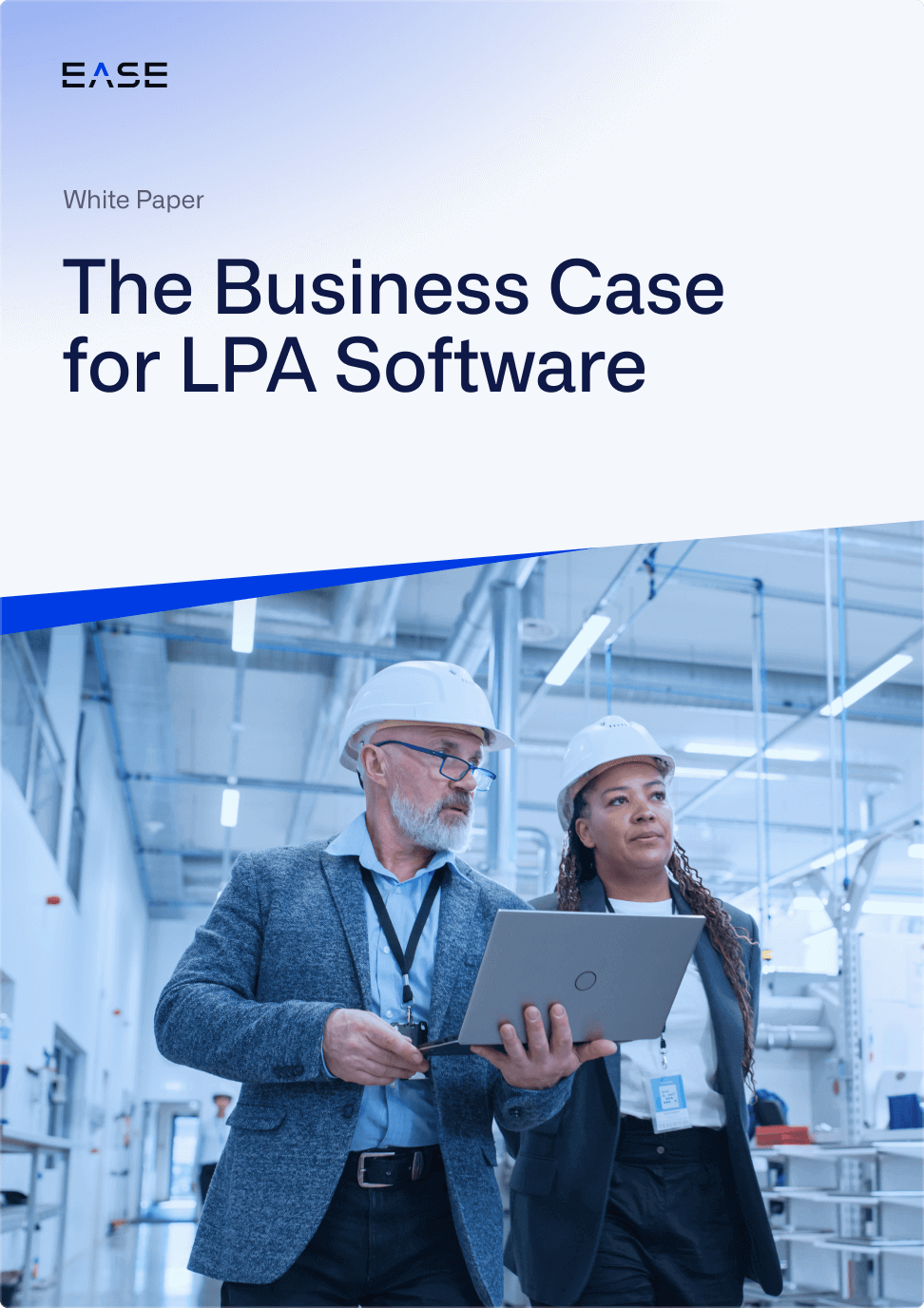Nearshoring and Supplier Audits: How Audit Software Can Help

Nearly 80% of manufacturing executives with operations in China are reshoring operations to the U.S. or plan to do so in coming years, according to management consultancy Kearney.
Growing interest in reshoring or nearshoring is the result of multiple supply chain challenges that have hamstrung manufacturing since the onset of the pandemic. Regionalizing the supply base, however, isn’t as simple as it sounds, especially when it means auditing dozens or even hundreds of new suppliers.
So how can manufacturers speed up the process while ensuring potential suppliers have corrected any identified issues?
If you’re already using digital audit and inspection software for plant floor checks, the answer may be closer than you think.
Below we take a look at how nearshoring is impacting manufacturing and how companies can use plant floor audit software to make new supplier audits faster and more effective.
Download a free eBook on Cost of Quality: The Hidden Truth About Your Ultimate Quality Metric
The Rise of Nearshoring
Globalized supply chains have been the natural result of decades of offshoring, where manufacturers sought to reduce costs by working with suppliers in countries with cheap labor.
Today, numerous causes have increased the risk associated with long supply chains. As a result, manufacturers are now looking to reduce the length of those supply chains by working with suppliers and building new facilities closer to home.
It’s why companies like Intel are ramping up construction of U.S. chip fabrication plants, and why the government unleashed $53B in subsidies to jumpstart U.S. chip manufacturing.
Nearshoring is also gaining traction in the automotive industry. For the first time, GM will source chips directly from a semiconductor manufacturer, with GlobalFoundries providing dedicated capacity for the company at its Malta, New York fab. Ford has also announced it will build a new $3.5B plant in Michigan to produce lithium ion phosphate batteries rather than import them.
Ramping Up Supplier Audits
In the automotive industry, OEMs are nearshoring production of not just high-tech components like EV batteries and semiconductor chips, but also basic components like brakes, stampings and pumps. But while making supply chains shorter may help accelerate production and reduce risk, revamping a manufacturer’s supplier ecosystem is no small feat.
For example, Tier I suppliers may need to add 30, 40 or even 50 new plants to its supplier list. For OEMs, that number may run into the hundreds. Each supplier must undergo an audit that may total hundreds of line items and differentiated questions.
The problem is that many companies are still using massive spreadsheets with multiple tabs and built-in macros to track supplier audits. Managing these complex spreadsheets is burdensome and time-consuming, and can create confusion over whether issues have been closed out. While you can write macros to extract nonconformances into an open issues list, there’s no way to track their completion. This creates a bottleneck in the process, as well as a huge workload for those responsible for supplier quality management.
Accelerating New Supplier Audits with Software
If you’re using audit and inspection software like EASE, a few hours spent converting spreadsheets into digital audits can deliver massive time savings on conducting the audits. Equally if not more important, it makes it simple to track open issues to closure.
Using a mobile audit and inspection app, manufacturers can:
- Customize answer formats to align with audit needs, e.g. pass/fail or scoring
- Add photos as evidence or for follow-up
- Automatically flag follow-up items, with dates, reminders and approvals
- Quickly report on status of customer audits and open issues
All in all, this allows companies to manage a high volume of audits easily while expediting the process of verifying new suppliers. Even with existing forms for these audits, it would be far simpler and more efficient from an auditing and turnaround standpoint to convert them into digital audit format.
Nearshoring is a growing trend that holds the promise of more reliable supply chains combined with drastically lower transit costs and shipping time. Reshaping a company’s supplier landscape, however, is a huge ship to turn around. It takes a lot of time and effort, particularly on the front end as manufacturers look to verify dozens or even hundreds of new suppliers. Audit software can drastically expedite the process, while providing greater visibility into audit status and issue resolution.
